For Architect Chie Konno everything connects to architecture, from daily life to work. Her interest in architecture dates back to junior high school when she was running a school newspaper and was awarded a trip to Europe. Chie visited England, Switzerland and France and she realized even then how different cities were built and became interested in how they were designed.
“Not just seeking beauty in modernity but incorporating authenticity from regional culture …designing a way of life and being. This is what I strive to pursue as an architect.“
– Chie Konno
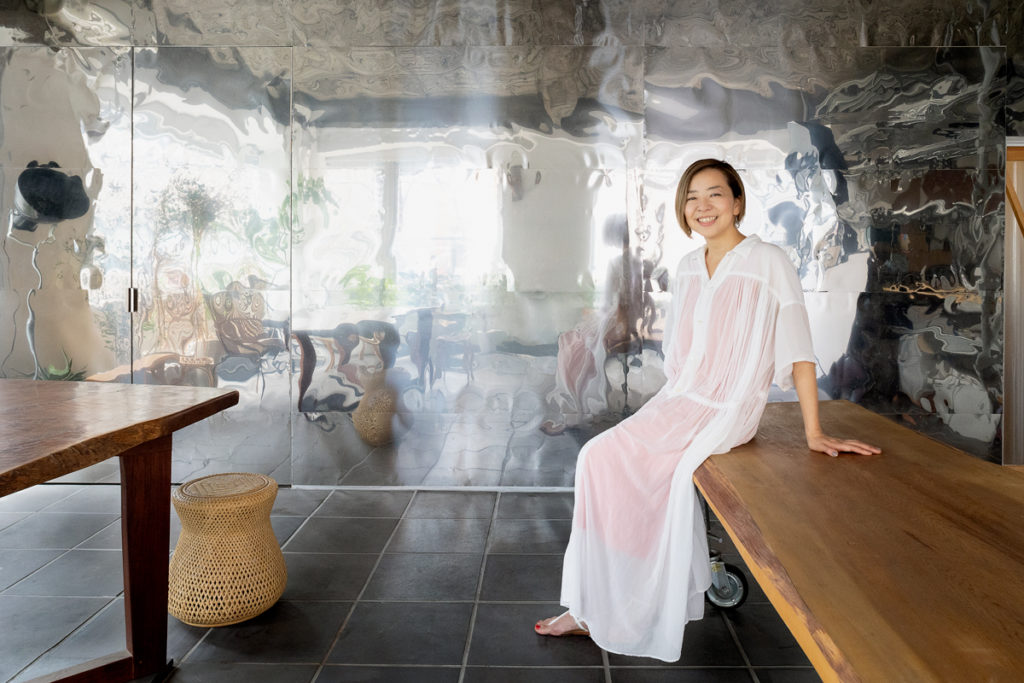
“I think and wish architecture itself should blend more into the environment and not just think of it as just protecting humanity but slowly be part a breath of the environment.
Loggia is a half indoor / outdoor public space seen in Italian cities and other parts of the world. With no specific purpose, various things such as work and hobbies, social activities with local people, changes in the natural elements such as light, shadow and wind are collected creating an interactive space between community and climate. Chie has been researching these spaces for quite some time.
“From the beginning of my first housing projects… where a house property can be accessed from the outside or light ,rain and birds for instance could easily come in and not just people… its been something that I have incorporated into my work. So even in the field of welfare services… they are asking us to design in these ways that are more open to the outside. But just by talking to the client we can`t see what the surroundings are so often I see myself wondering aimlessly talking to strangers… about the neighborhood or region. Finding hints and meaning and value to these places…and through architecture it can support some of these ideas…and connect to that environment….“
In Tokyo there are very few public spaces to just sit in the shade and a place to sit is essential. If there is a way to generate and incorporate this idea in a project, Chie tries to incorporate it in.
“The boundaries between the site and surrounding starts to blur and blend into the city and will eventually change the behavior of people and place. When you make that “yohaku” (blank spaces) that aren’t planned or fixed to have a specific purpose then gradually it gets discovered by people organically.“
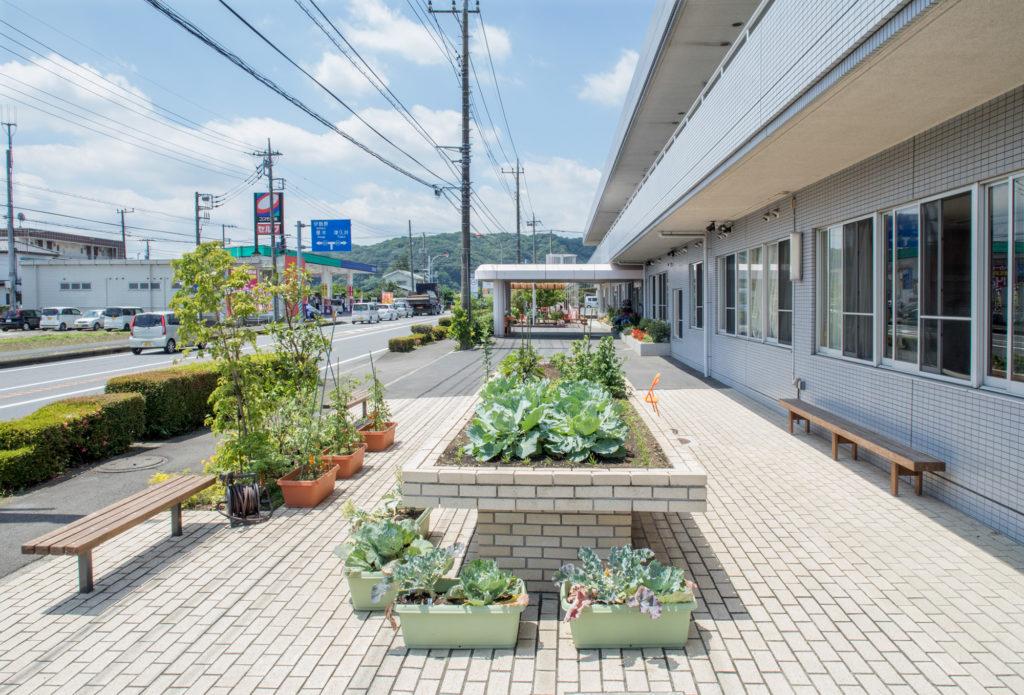
were torn down and benches were placed instead. The raised plant beds were
designed so that elderly who use wheelchairs have access to tend to the garden
while seated.
“For example I worked on a small elderly daycare service. Normally there will be a border of some sort between the spaces but I made it open so there are benches. One day a child with full time working parents started to come use the space on his own. One of the elder service user requested that she wanted to make food for the child. From that incidence the care center opened a cafeteria. It gradually escalated to the community with volunteers and donations of food started to pour in from local farmers. Now in its 7th year it still brings in 30 to 40 people to the cafeteria and runs for free. So just by creating an empty space a whole new story grew out of it that no one thought of before.“
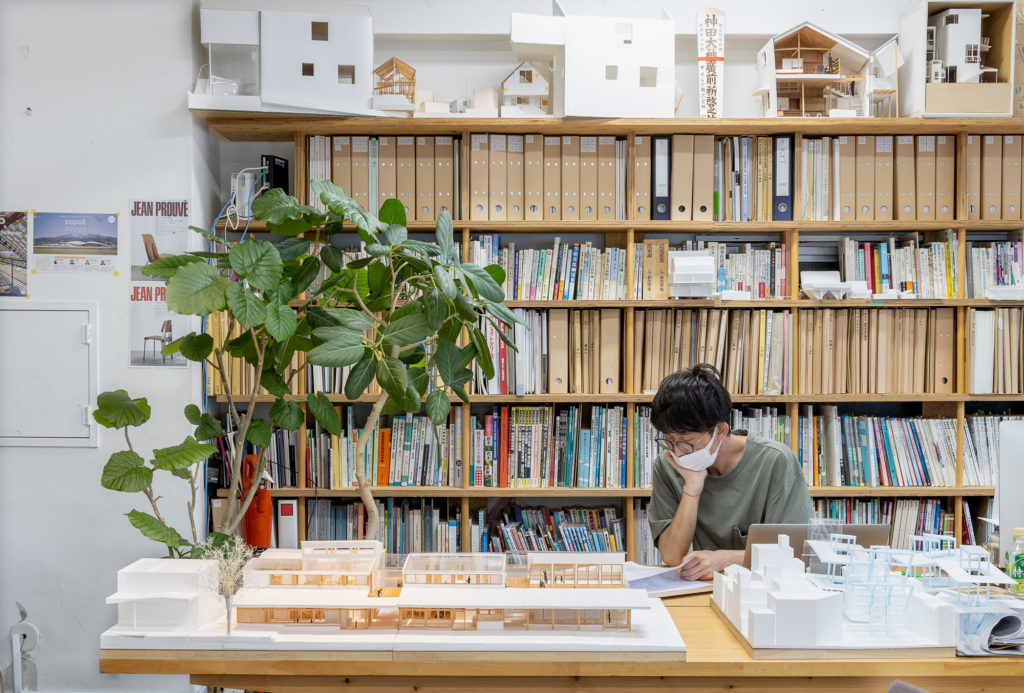
Chie Konno is also a visiting professor at the Kyoto Institute of Technology where she often finds herself experimenting with students and colleagues while engaged in discussions relating to how local communities bridge the gaps between past and present. With climate change becoming a part of our daily life, I asked where that fits into her blurring of humanity and space.
“When I went to Vietnam it was so hot with humidity at 98 percent. But not everyplace was air conditioned. They used mist and roofs were wrapped in ivy for cooling some stores and places. I think we have reached our limits relying on machines.“
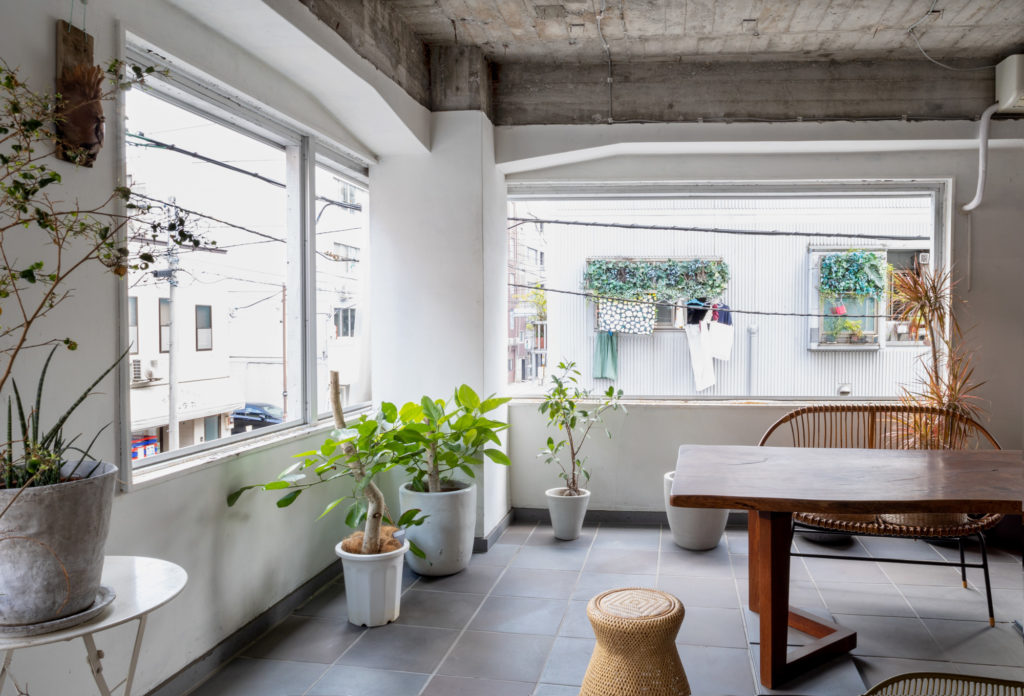
The second floor of her Tokyo office is a garden space. There are no glass windows, it is completely open. The 3rd and 4th floor are office spaces but the toilets are only on the garden floor so you are forced to feel the climate year round or any given hour of the day. It becomes an immediate connection to the outside. In housing or office buildings, if the indoor and the outdoor interlock, then we as humans individually become more conscious to their environment.
“Small voices have to be collective at end or nothing will change… so a stranger will look at our building and think that the window has no glass. We can question people and they might eventually respond by realizing that purpose. I think it is important to not lose that stance and cause comfortable-discomfort. By experimentation we can see how close we can get to our planet and nature.“
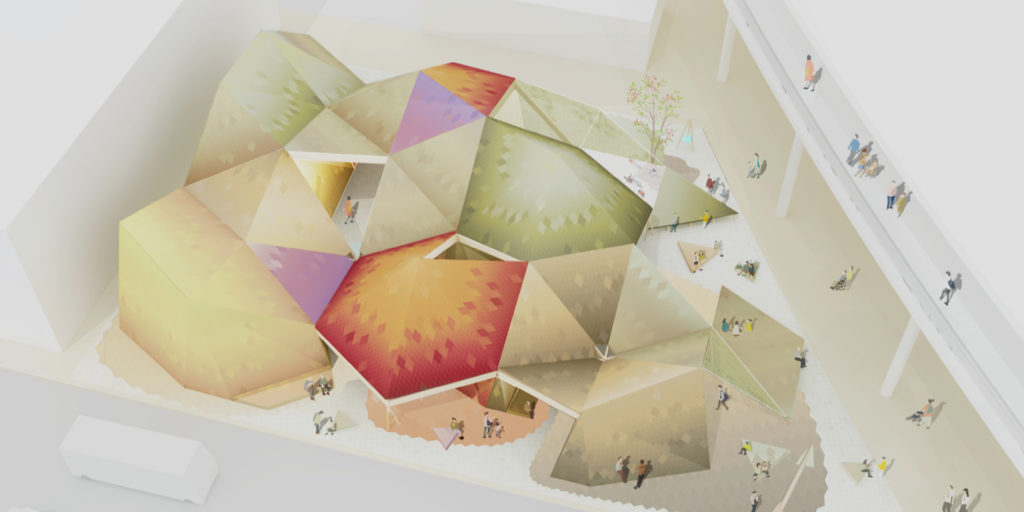
In 2025 Japan will host the world expo in Osaka. Konno and team will participate in making a gallery space.
“We are proposing a structure that eventual can decompose to dirt. We are studying ways to use “vegetable concrete” as a material. Wasted vegetable from farm and food you can make tiles by drying them. An “edible” tile we are developing with a company. If you left the building behind it will eventually decompose. We are also trying not to rely on machines but use mists to cool the environment. This is an exhibition idea but we would like incorporate it into real structures…. some day.“
Yasuyuki Takagi
Yasuyuki Takagi is a photographer / director born in Tokyo, Japan. He studied Media Arts at Pratt Institute in Brooklyn, New York and lives and works in Tokyo, Japan.He has published photo books “小さな深い森 Petite Foret Profonde” and ”植木 UEKI” both from France and his latest project “マロニエ Marronnier” was shortlisted at the 50th ARLES international photography festival. His directing works includes: “How to be like Tom Sachs” “A portrait of a Place: Arakicho” amongst others.











